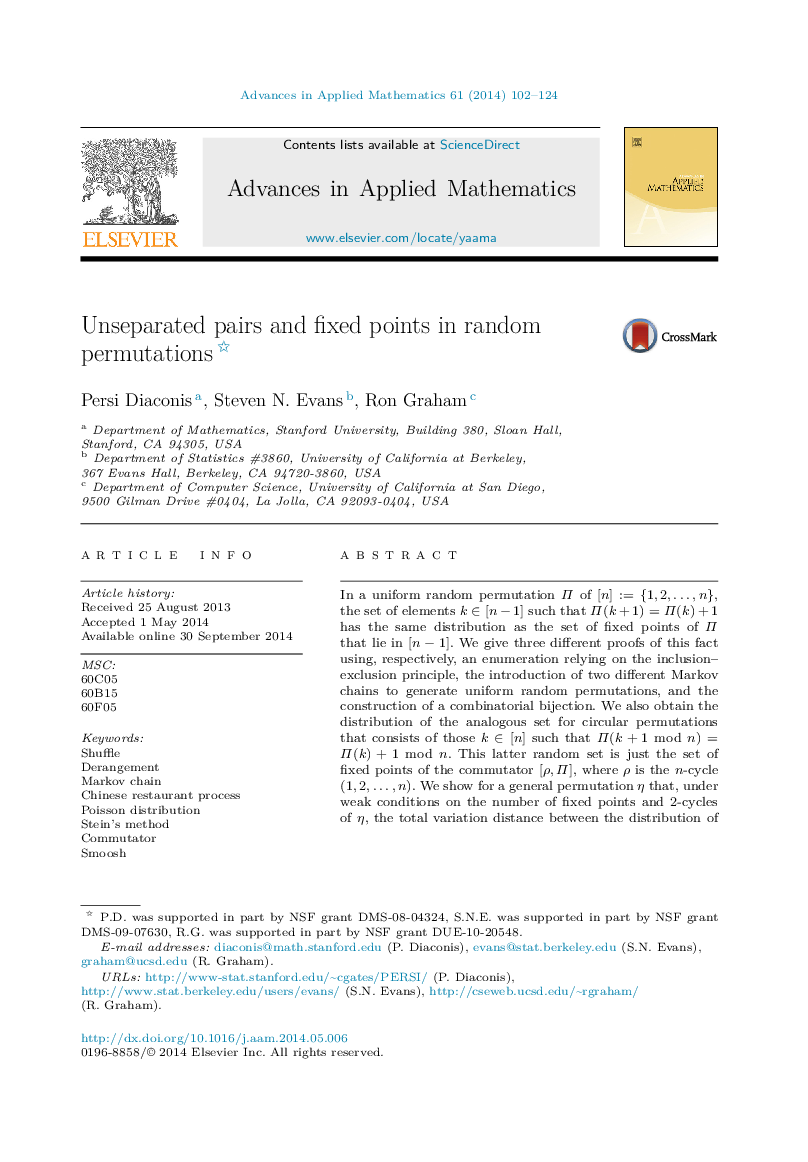| Article ID | Journal | Published Year | Pages | File Type |
|---|---|---|---|---|
| 4624660 | Advances in Applied Mathematics | 2014 | 23 Pages |
In a uniform random permutation Π of [n]:={1,2,…,n}[n]:={1,2,…,n}, the set of elements k∈[n−1]k∈[n−1] such that Π(k+1)=Π(k)+1Π(k+1)=Π(k)+1 has the same distribution as the set of fixed points of Π that lie in [n−1][n−1]. We give three different proofs of this fact using, respectively, an enumeration relying on the inclusion–exclusion principle, the introduction of two different Markov chains to generate uniform random permutations, and the construction of a combinatorial bijection. We also obtain the distribution of the analogous set for circular permutations that consists of those k∈[n]k∈[n] such that Π(k+1modn)=Π(k)+1modn. This latter random set is just the set of fixed points of the commutator [ρ,Π][ρ,Π], where ρ is the n -cycle (1,2,…,n)(1,2,…,n). We show for a general permutation η that, under weak conditions on the number of fixed points and 2-cycles of η , the total variation distance between the distribution of the number of fixed points of [η,Π][η,Π] and a Poisson distribution with expected value 1 is small when n is large.
